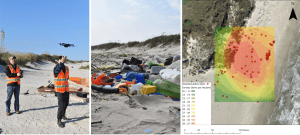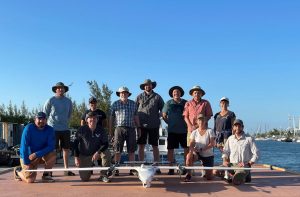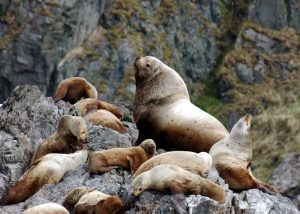The OAR ORTA UxSRTO is no longer operating.
For further information, please visit The Office of Marine and Aviation Operations (OMAO) Uncrewed Systems Program webpage.




Address critical data gaps
Facilitate UxSRTO application
Evaluate ship-launched UxSRTO technology and infrastructure
Develop extended visual line of site operations
Analyze the value of high-altitude observations
Develop UxSRTO CONOPS for conducting pinniped survets in remote regions
Accelerate transition of UxSRTO capabilities from research to operations
Provide expertise and resources for UxSRTO research and development
Uncrewed Systems Research Transition Office
What We Do
Uncrewed Systems Research Transition Office (UxSRTO) can revolutionize NOAA’s ability to monitor and understand the global environment. There is a key information gap today between instruments on Earth’s surface and on satellites – UxSRTO can bridge that gap. Operated by remote pilots and ranging in wingspan from less than six feet to more than 115 feet, UxSRTO can also collect data from dangerous or remote areas, such as the poles, oceans, wildlands, volcanic islands, and wildfires. Better data and observations improve understanding and forecasts, save lives, property, and resources, advancing NOAA’s mission goals.
Operated remotely, UxSRTO can collect critical observations from dangerous or remote areas, such as the poles, oceans, wildlands, storm damaged areas, volcanic islands, and wildfires. Demonstrating extraordinary capabilities for acquiring data in such challenging environments, matured UxSRTO technologies provide a transformative capacity to enable NOAA’s scientists to better perform their missions. UxSRTO advances NOAA’s goals of preserving lives, property, and environmental resources by enhancing scientific understanding, increasing forecast accuracy, and providing safer, more efficient earth and wildlife observations.
NOAA’s Alaska Fisheries Science Center’s (AFSC) studies Alaska’s marine ecosystems to ensure the sustainable use and conservation of living marine resources in federal waters. A recent study done by NOAA scientists focuses on surveying ice seals, with the primary goal of deploying non-invasive, low-disturbance methods for monitoring the body condition of Arctic seals as an indicator of population health and productivity. During April 2022, researchers with the The Polar Ecosystems Program (PEP) embarked on the NOAA AFSC ice seal research expedition aboard the NOAA Ship Oscar Dyson in the eastern Bering Sea. (Video/Credit: AFSC). Read more in our article, click here.
Check Out Our Newest Videos
Check Out the Highlights of UxSRTO
The UxS Research Transition Office (UxSRTO) is helping NOAA realize the potential these systems offer by supporting innovative research and development (R&D) of UxS technologies across NOAA’s broad mission space.
Current HighlightsWhat's Happening In the News


Marine Debris Detection with UAS, Machine Learning, and Polarimetric Imaging
Marine debris, human-made material that is discarded or abandoned into the marine environment, is a pervasive problem plaguing shorelines around the world. Marine debris poses serious threats to wildlife, degrades coastal and marine environments, and can negatively impact the Blue Economy (e.g., tourism, shipping, and fisheries). NOAA’s Marine Debris Program (MDP), as the U.S. Federal lead for assessment, prevention, and removal of debris, works with partners across the Nation to conduct debris shoreline surveys to identify debris accumulations, locations, and sources as part of the Marine Debris Monitoring and Assessment Project (MDMAP). Data from these surveys have been used to assess spatial and temporal trends in shoreline debris, inform behavior change campaigns focusing on specific items and assess the effectiveness of legislation targeting specific items. In this project, NOAA’s National Centers for Coastal Ocean Science (NCCOS), NOAA’s MDP, and Oregon State University (OSU) partnered to investigate three emerging technologies with the potential to transform how marine debris shoreline surveys are conducted: uncrewed aircraft systems (UxS), machine learning, and polarimetric imaging (PI) cameras.
This innovative technology and corresponding operations were funded and supported by the OAR Uncrewed Systems Research Transition Office (UxSRTO).


NOAA Completes FVR-55 Shipboard Launch/Recovery Operations to Measure Atmospheric Aerosols and Fluxes needed to Improve Climate Model Simulations
During the month of March 2022, the NOAA Pacific Marine Environmental Laboratory (PMEL) and Physical Sciences (PSL) Laboratories used a newly developed uncrewed aircraft system (UAS) to better understand the chemical and physical characteristics of the atmosphere. The suite of sensors used in these demonstrations will improve climate and weather models by providing unique information about the atmosphere.
In partnership with L3Harris Technologies, an American technology company, NOAA has used the newly developed FVR-55 (Fixed Wing Vertical Takeoff and Landing Rotator) UAS to conduct shipboard launch and recovery operations for collecting atmospheric data with the NOAA “Clear Sky,” “Cloudy Sky,” and “miniFlux'' scientific payloads. Development of this innovative technology was initially funded through a NOAA Phase I Small Business Innovation Research (SBIR) award in 2016, followed by a Phase II SBIR award and follow-on contract for the continued development of the UAS. Continued development and operations were funded and logistically supported by both the OAR Uncrewed Systems Research Transition Office (UxSRTO) and the OMAO UxS Operations Center (UxSOC). Participants from PMEL, PSL, UxSRTO, UxSOC, and L3Harris performed 11 fully autonomous ship-launching and landing flight operations (14.9 hours of total flight time) off Key West, FL to test and demonstrate the scientific payloads.


Use of Artificial Intelligence (AI) to Monitor Steller Sea Lion Populations
Every year, Alaska Fisheries Science Center’s Marine Mammal Laboratory of NOAA Fisheries uses crewed and uncrewed systems to conduct aerial surveys of known Steller sea lion sites across Alaska. These surveys are essential to monitoring the endangered western population of Steller sea lions in Alaska. While the population as a whole has begun to show signs of recovery, one region in the westernmost part of the population range has declined 94% in the last 40 years (showing no signs of recovery), and rookeries – sites where sea lions mate, give birth, and rest – have begun to disappear. In the Gulf of Alaska, anomalous warm water events beginning in 2014 are becoming more commonplace and are likely causing the observed declines in the area – an area which was previously showing signs of sea lion population recovery and began to increase in 2002.
